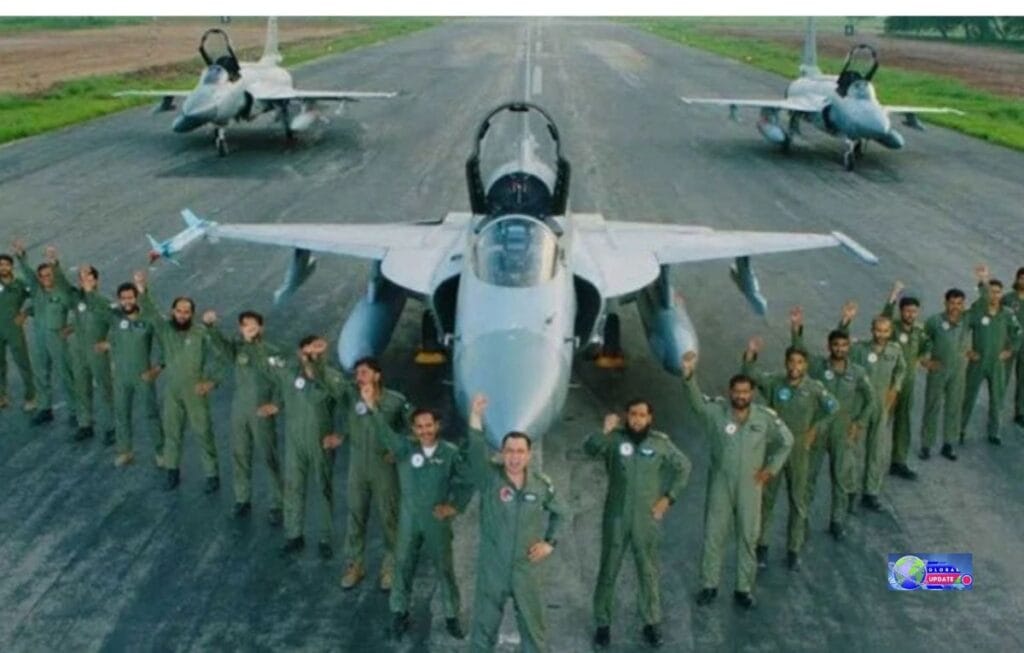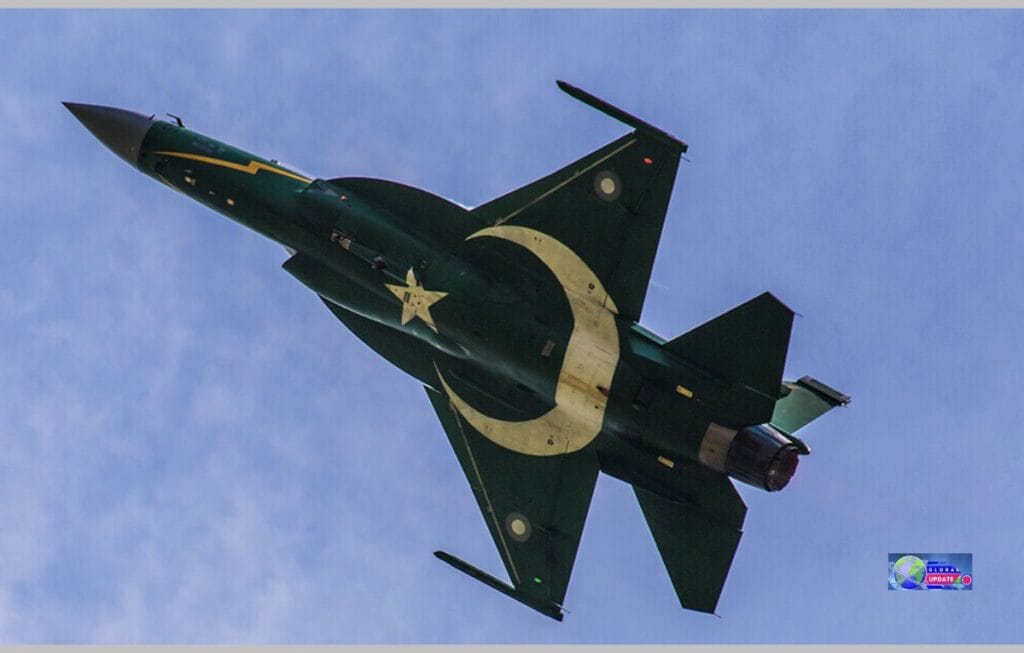The Pakistan Air Force (PAF), one of the three main branches of the Pakistan Armed Forces, has played a critical role in defending the nation’s airspace and contributing to regional peace and security. Known for its professionalism, technological advancement, and strategic importance, the PAF continues to evolve with time, symbolizing Pakistan’s pride, courage, and resilience.
Historical Background of the Pakistan Air Force
The origins of the Pakistan Air Force can be traced back to August 14, 1947, when the country gained independence from British India.
At its inception, the air force inherited several aircraft, personnel, and bases from the Royal Indian Air Force. Initially named the Royal Pakistan Air Force (RPAF), it faced the daunting task of defending a newly formed country with limited resources. The RPAF was officially renamed the Pakistan Air Force in 1956 when Pakistan became a republic.
Despite its humble beginnings, the PAF quickly rose to prominence through discipline, training, and operational efficiency. The support from allied countries, especially the United States and China, helped the PAF build a foundation of modern aviation capabilities.

Mission and Core Objectives
The Pakistan Air Force’s primary mission is to secure Pakistan’s airspace and provide aerial support to the Pakistan Army and Navy. Its core responsibilities include
- The task involves defending national airspace from external threats.
- The position entails delivering aerial support to ground and naval forces during war operations.
- PAF is conducting reconnaissance and surveillance missions.
- Engaging in humanitarian and disaster relief operations.
- Supporting UN peacekeeping efforts.
The PAF is also committed to maintaining high operational readiness and technological superiority through training, innovation, and strategic partnerships.
Aircraft and Technological Advancement
Over the years, the PAF has transitioned from relying solely on imported aircraft to developing indigenous solutions and entering strategic partnerships for co-production.
Principal Aircraft in the PAF’s Inventory
- JF-17 Thunder: A multi-role combat aircraft co-developed with China. This aircraft is the backbone of the PAF and is used for both air-to-air and air-to-ground missions.
- F-16 Fighting Falcon: Acquired from the U.S., these aircraft are considered top-tier in air combat and precision bombing.
- Mirage III/V: French-origin aircraft that have been upgraded and still serve in various roles.
- Saab 2000 AEW&C and ZDK-03 Karakoram Eagle: Used for airborne early warning and control.
- IL-78 MP: An aerial refueling aircraft that enhances PAF’s operational range.
Indigenization and the Role of PAC Kamra
The Pakistan Aeronautical Complex (PAC) Kamra is vital in assembling, maintaining, and modernizing the PAF’s fleet. The success of the JF-17 program is a milestone in Pakistan’s aviation history.
PAC is now focusing on developing Block III variants of the JF-17, which will incorporate cutting-edge avionics, AESA radar, and improved weapon systems.
Project Azm
Under Project Azm, the PAF envisions developing a fifth-generation fighter aircraft (FGFA), uncrewed combat aerial vehicles (UCAVs), and advanced training systems. This effort seeks to diminish dependence on foreign technology and equip for future combat.
Development of Human Resources and Training
PAF is known for its rigorous pilot training programs. The Pakistan Air Force Academy in Risalpur produces world-class officers through theoretical and practical training.
- Combat Commanders School (CCS): Equivalent to the U.S. Top Gun school, this facility hones the skills of PAF’s elite pilots.
- PAF’s training has attracted foreign cadets from friendly nations, enhancing bilateral military cooperation.
In addition to pilots, the PAF invests in training air defense personnel, engineers, and IT specialists to meet modern warfare demands.
Role in Humanitarian and Civil Operations
The PAF is essential in providing relief during natural disasters, both domestically and internationally.
- During the 2005 earthquake and 2010 floods, PAF aircraft transported thousands of tons of relief goods and evacuated stranded citizens.
- PAF field hospitals and air medical evacuation teams have also operated in remote areas with limited ground access.
Moreover, the PAF actively participates in UN peacekeeping missions, contributing personnel and aircraft to global stability efforts.
Women in the PAF
The inclusion of women in combat and non-combat roles marks a progressive step for the PAF.
- Ayesha Farooq became Pakistan’s inaugural female fighter pilot in 2006.
- Since then, many women have joined as fighter pilots, engineers, and administrators.
- PAF encourages gender diversity and has taken steps to provide equal opportunities through training and promotions.
Modernization and Future Outlook
The future of the PAF hinges on continuous modernization in the face of evolving threats, cyber warfare, and geopolitical shifts.
Cyber and Space Capabilities
The PAF invests in cyber defense units and space-based surveillance to enhance intelligence gathering and decision-making.
Drone Warfare and AI
Drone integration, such as the Burraq UCAV, has revolutionized surveillance and precision strikes. Artificial intelligence (AI) is being researched for automation, threat detection, and real-time battlefield analysis.
Strategic Partnerships
Pakistan continues to strengthen its defense ties with
- China engages in joint exercises, produces aircraft, and facilitates technology transfer.
- Turkey: Collaborating on drone technology and electronic warfare.
- Qatar and Saudi Arabia: with training exchange programs and advisory roles.
- These partnerships ensure that the PAF remains on par with global air forces.
Public Perception and National Pride

The PAF is often regarded as the most admired institution in Pakistan. Events like Pakistan Day and Air Force Day (September 7) are celebrated with air shows and tributes to fallen heroes. The PAF has also inspired countless films, dramas, and documentaries highlighting its valor and sacrifices.
Programs like “Pride of the Nation” and recruitment drives have fostered public engagement and motivated youth to join the armed forces.
Conclusion
The Pakistan Air Force is not just a defense institution; it embodies national spirit, technological ambition, and unyielding resilience. From its modest beginnings in 1947 to becoming one of the most respected air forces in the region, the PAF has persevered against all challenges.
With a vision focused on indigenization, strategic partnerships, and modernization, the PAF is well-prepared to meet the challenges of the 21st century. Whether in war, peace, or humanitarian crises, the Pakistan Air Force remains vigilant, professional, and ready—truly the Guardians of the Sky.



